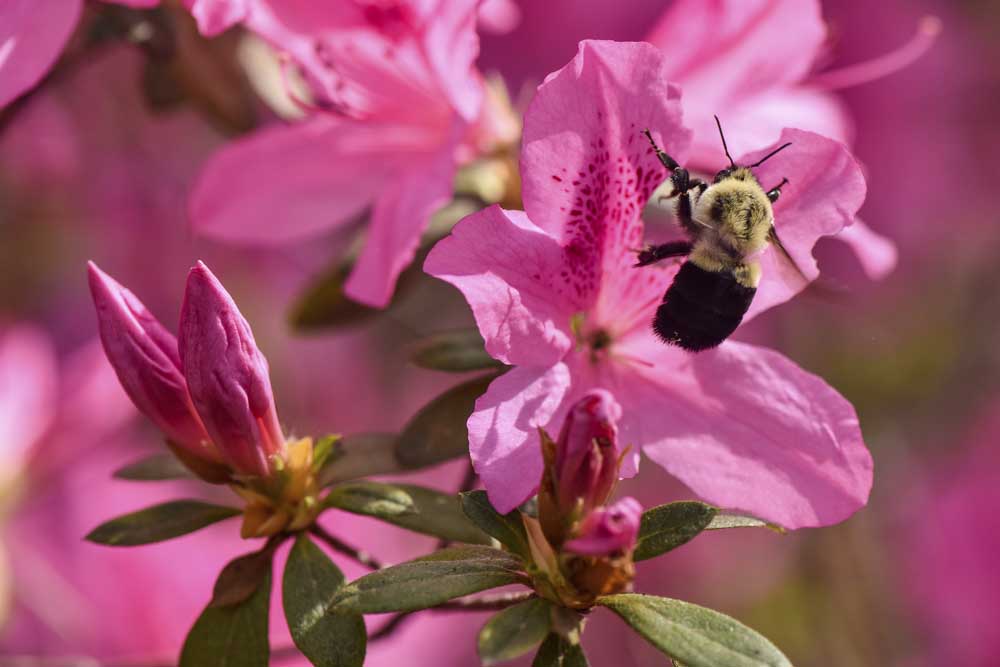East Texas experiencing ‘very high’ allergen levels
Published 3:49 pm Monday, March 26, 2018

- A bee on a flower at the Tyler Rose Garden in Tyler, Texas, on Monday, March 26, 2018. (Chelsea Purgahn/Tyler Morning Telegraph)
Get out the tissues. The Tyler area is seeing the second-highest allergen levels recorded in the past five years, and high levels will likely continue through the week.
UT Health East Texas, which tracks pollen in the air daily, said in a report on Monday that allergens from trees were “very high,” coming from pine, elm, oak, hackberry, sweet gum, willow and mulberry trees.
The “very high” level means anyone with any sensitivity to those types of tree pollens will experience symptoms, and people who are extremely sensitive to pollen could have severe symptoms, according to UT Health East Texas.
Mold allergen levels are “moderate,” coming from two different types of fungi, according to UT Health East Texas. The “moderate” level means many individuals who are sensitive to mold allergies will experience symptoms.
A map on Pollen.com, which aggregates national information on allergen levels, shows East Texas is experiencing some of the most severe allergen levels in the country.
The cities of Tyler and Longview ranked at 10.7 out of 12 for allergens on Monday and will rank at a 10.9 on Tuesday, according to Pollen.com. In both cities, allergen levels will then drop to 5.6 on Wednesday before rising to 7.4 on Thursday and 11 on Friday.
Dr. Jonathan Buttram, an allergist and immunologist for UT Health Lindale, said he began seeing an intensification of allergy symptoms among patients three or four weeks ago, when tree pollination started.
Buttram said people who suffered from allergy symptoms during the winter were mostly responding to mountain cedar. During this time of year, he said tree pollen is the main allergy culprit.
Buttram said pine pollen, which is relatively large and has a bright yellow-green color, is the most visible allergen right now, but oak is the most prolific and problematic in the Tyler area.
“(People) should seek medical attention if symptoms are not easily controlled with avoidance measures and over-the-counter meds,” Buttram said in an email.
“They should definitely see their primary care physician if symptoms are accompanied by fevers or other signs of infection.”
Avoidance measures include staying inside, bathing at night to remove pollen from the body, and bathing pets that are exposed to pollen, Buttram said.
Allergists can help in the event traditional allergy medications from a primary care physician are not providing relief, Buttram said.
Allergists use immunotherapy to treat symptoms and can use other measures to prolong relief after immunotherapy ends, he said.
TWITTER and INSTAGRAM: @_erinmansfield
1. Stay indoors, especially in early to mid-morning.
2. Keep doors and windows closed.
3. Keep car windows up and use air conditioning with recirculating inside air.
4. Wear sunglasses when outdoors to keep pollens out of the eyes.
5. If spending significant amount of time outdoors, bathe at night to remove pollens from hair and skin.
6. Wash pets weekly if they are inside/outside.
Source: Dr. Johathan Buttram, allergist and immunologist at UT Health Lindale






